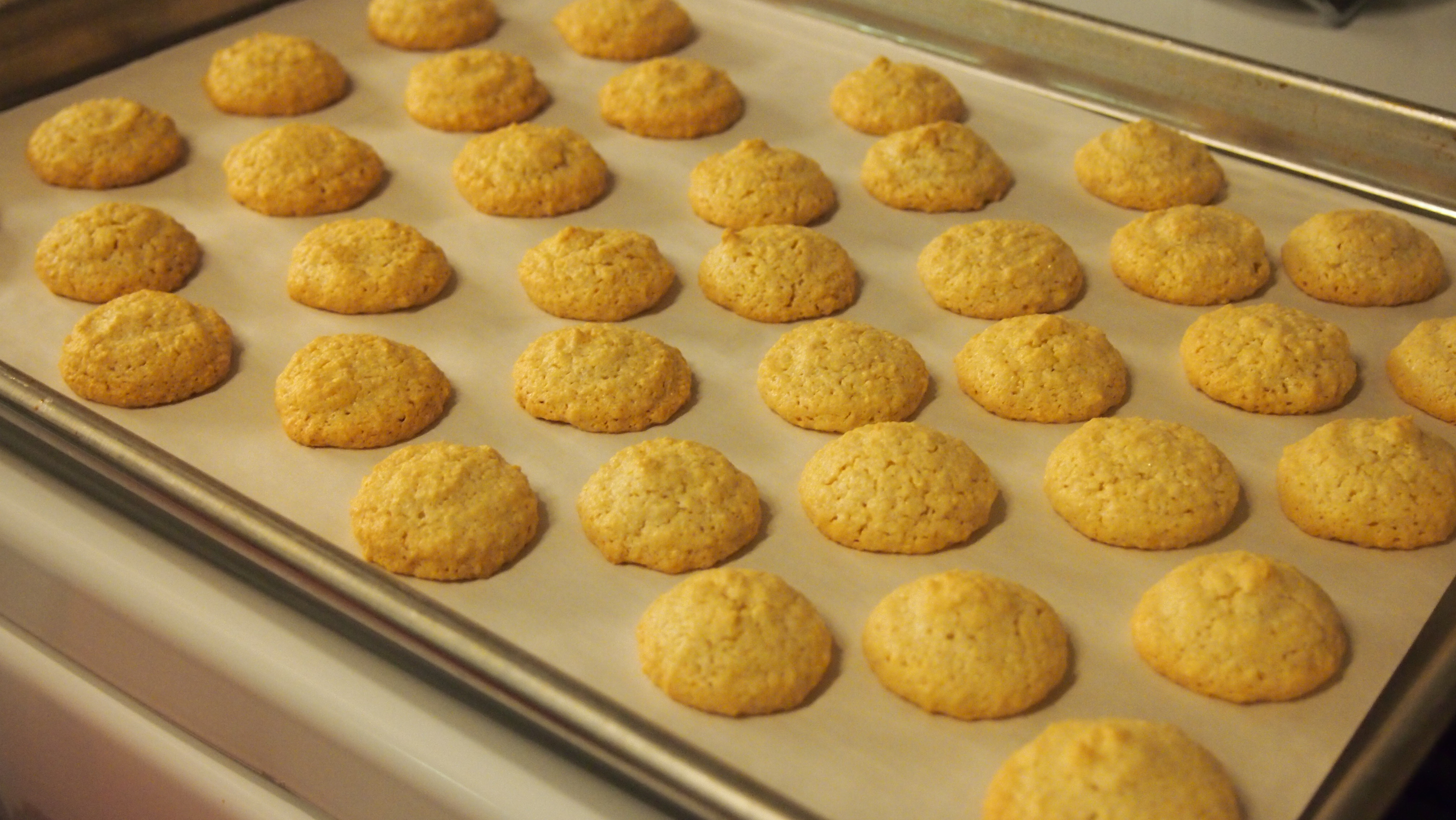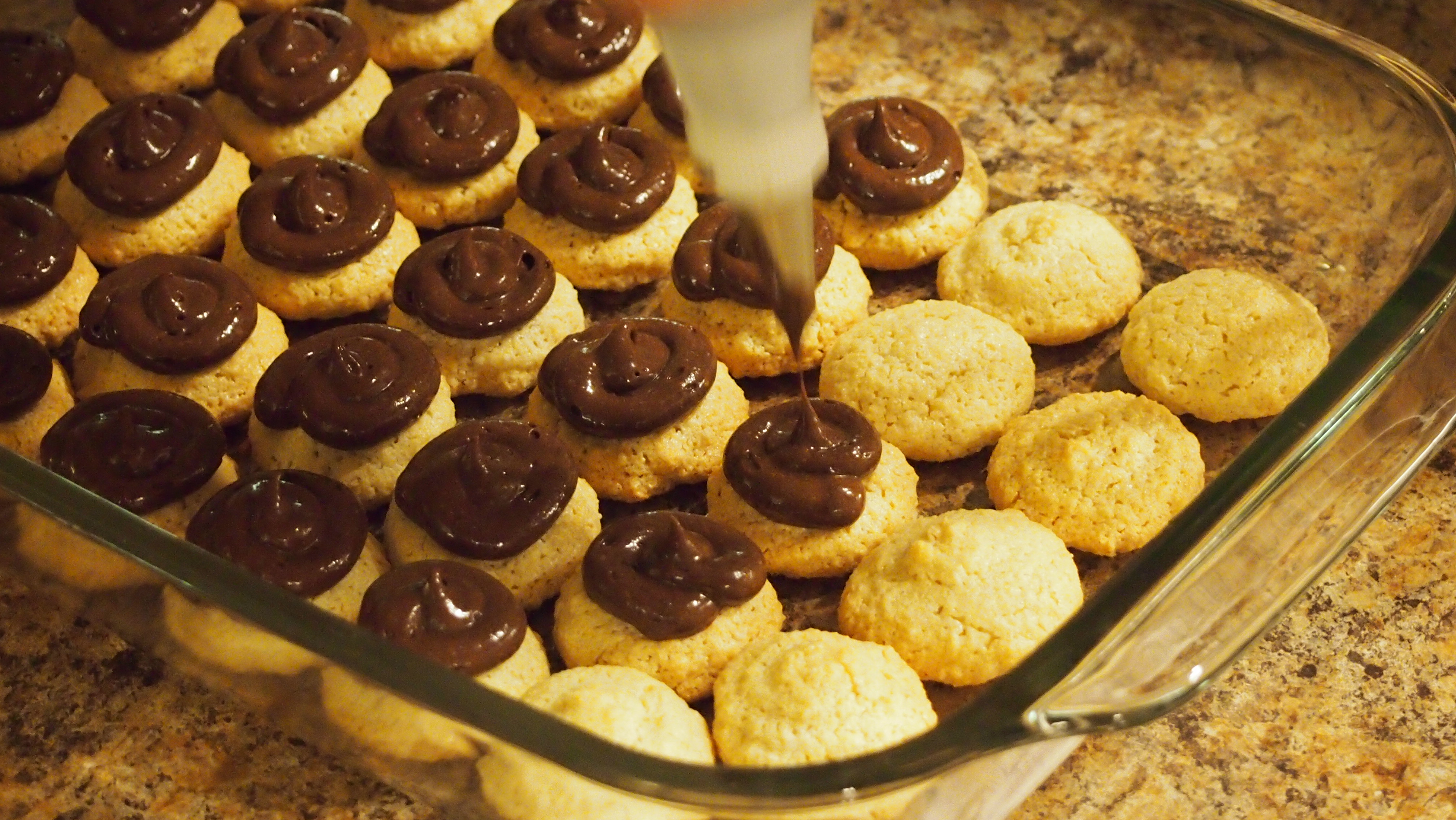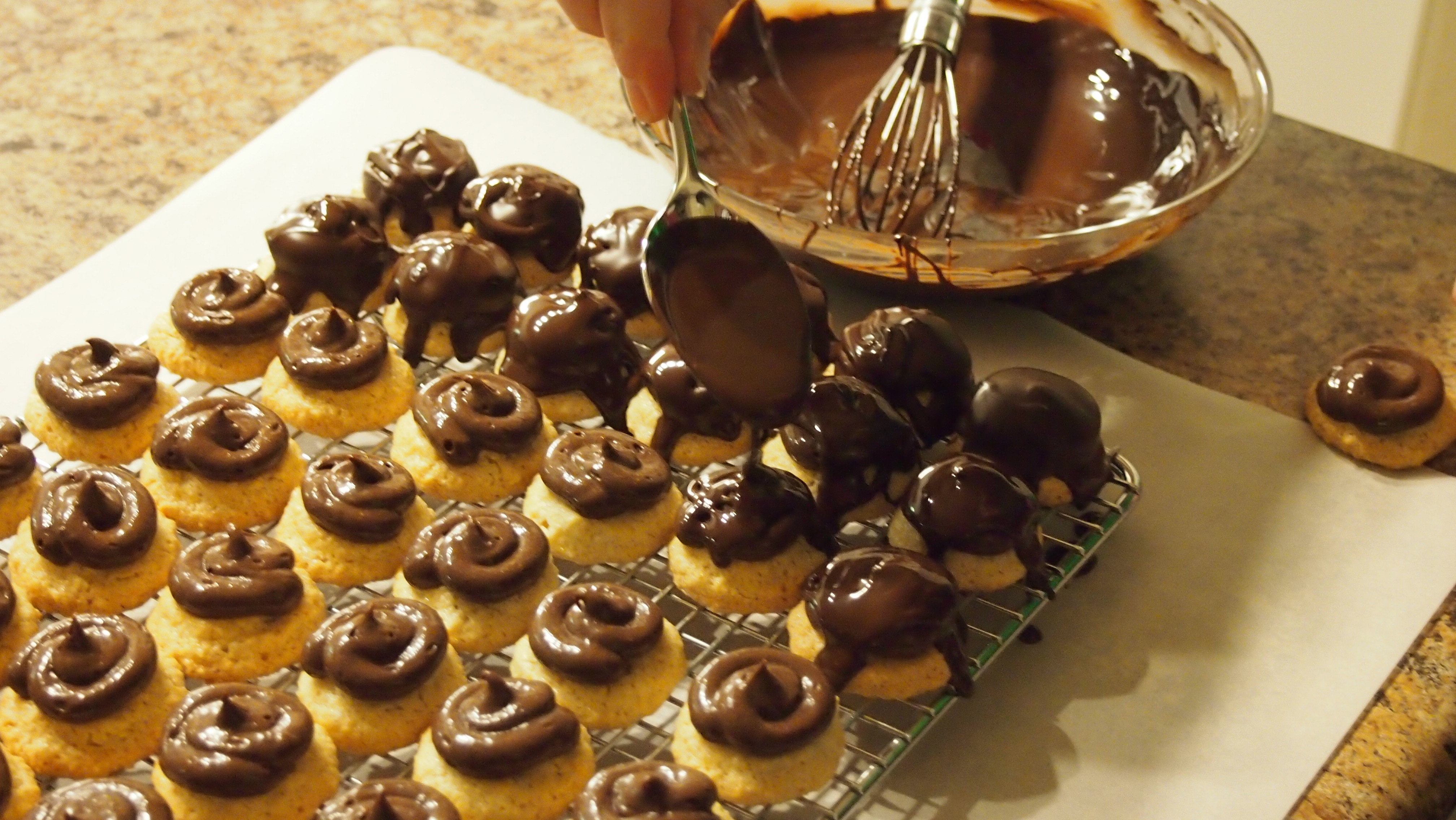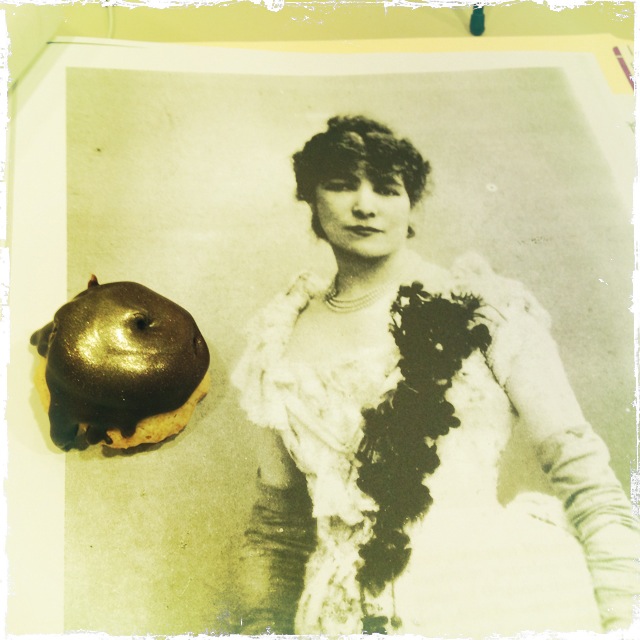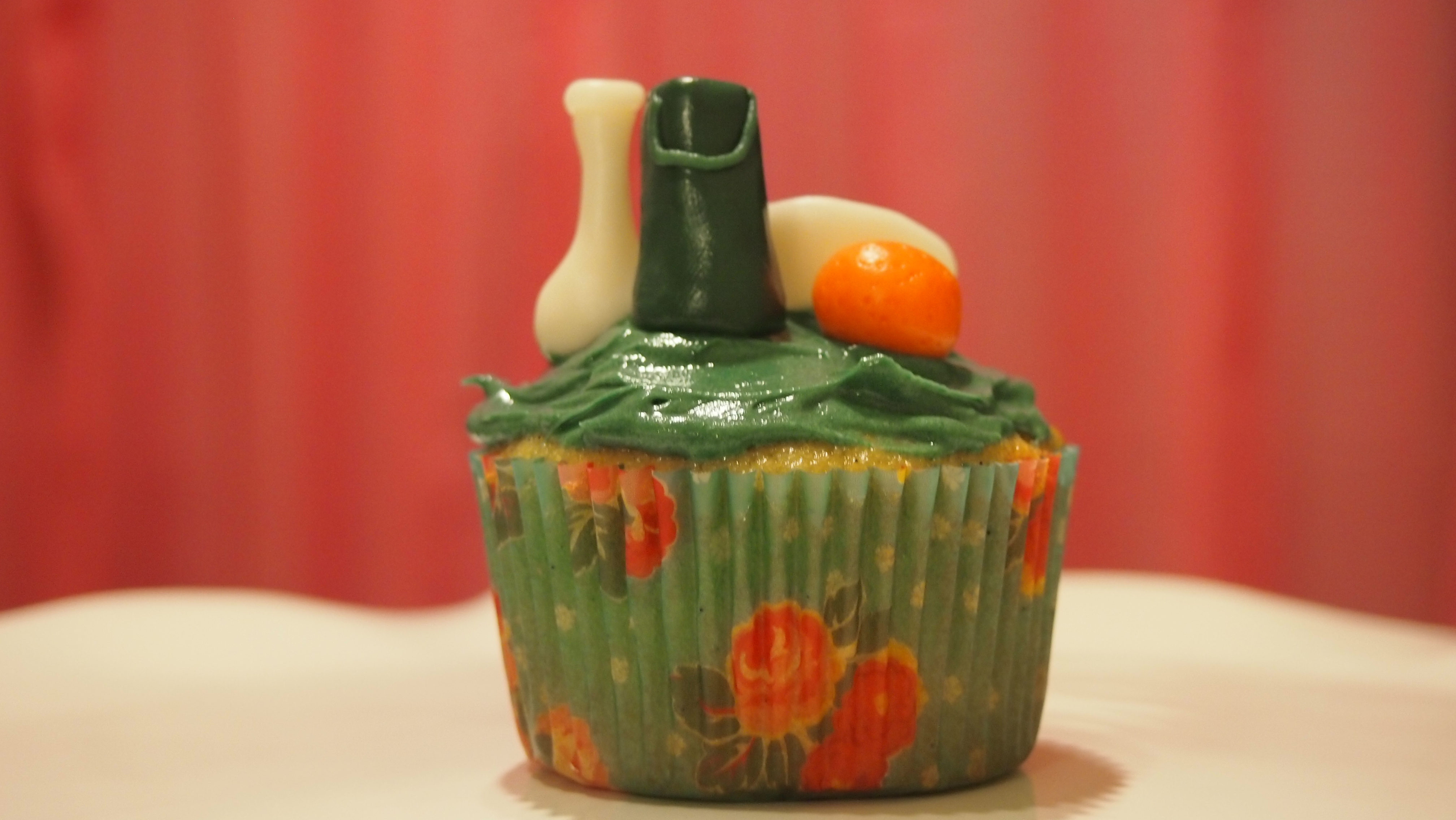For this month’s recipe, we’re taking a trip through Paris with our new exhibition, Posters of Paris: Toulouse-Lautrec and His Contemporaries. Alphonse Mucha created this poster for Sarah Bernhardt, one of the most renowned actresses of the 19th century. She was so loved, in fact, that a Scandinavian baker named a cookie for her. Though somewhat complex, these multilayered confections are sure to dazzle, much like their namesake and her posters.
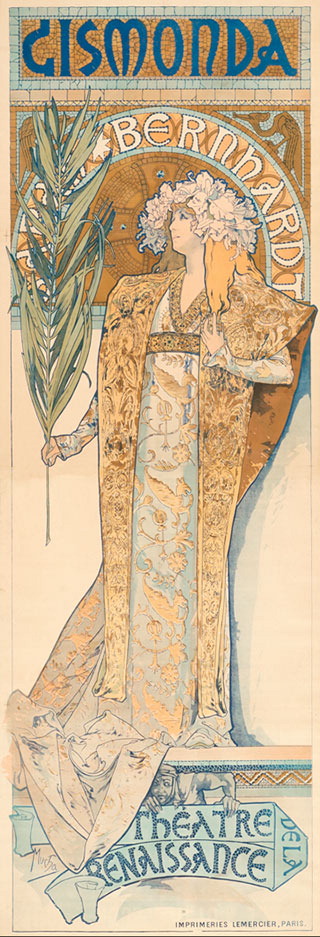
Alphonse Mucha, Gismonda, 1894-1895, Los Angeles County Museum of Art, Kurt J. Wagner, M.D., and C. Kathleen Wagner Collection, M.87.294.1
Sarah Bernhardt Cookies
Yields about 60 cookies
Level: Advanced
Filling:
6 ounces good quality dark chocolate, coarsely chopped
Scant ½ cup sugar
Scant ½ cup water
3 large egg yolks, room temperature
¼ cup heavy cream, room temperature
½ teaspoon vanilla extract
Cookies:
3 cups blanched slivered almonds
1 ½ cups sugar
3 large egg whites, room temperature
1 ½ teaspoons almond extract
Splash of water
Coating:
12 ounces good quality dark chocolate, coarsely chopped
2 tablespoons vegetable shortening
Filling: Whisk chocolate in a glass bowl set over a small pot of simmering water until smooth and melted. Remove chocolate from heat and set aside to cool. Combine sugar and water in small saucepan and simmer until syrup becomes clear, about 5 minutes, then set aside. In the bowl of a stand mixer set over a small pot of simmering water, whisk egg yolks until warm, about 2 minutes.
Transfer bowl to stand mixer fitted with whisk attachment. Add cream and beat mixture on medium until combined. Reduce speed and slowly pour in hot syrup. Return speed to medium and continue beating until cool and fluffy, about 3 minutes. Add melted chocolate, scraping down sides of bowl as needed until fully incorporated. Refrigerate filling until firm, about 1 hour (or up to 1 week).
Cookies: Preheat oven to 325° F. Line rimmed baking sheet with parchment paper. Place almonds in food processor and process for 1 minute. Add sugar and process into a fine crumb, about 3 minutes. Add egg whites and almond extract and process until mixture wads around blade. Scrape bowl with spatula and add splash of water. Process a few more seconds until paste is firm yet smooth enough to pipe.
Transfer paste to pastry bag fitted with coupler only (no tip). Pipe small rounds onto prepared baking sheet, applying pressure to bag for about 4 seconds per cookie and leaving 1 inch between each. Bake until golden around the edges, about 20 minutes, rotating sheet halfway through. Allow to cool slightly on baking sheet then transfer to metal rack to cool completely.
Once cookies are completely cool, transfer filling to pastry bag fitted with coupler only or with #11 tip. Pipe a peaked mound of filling on top of each cookie. Transfer cookies to freezer until filling is very firm, about 1 hour.
Coating: Whisk chocolate in a glass bowl set over a small pot of simmering water until smooth and melted. Remove from heat and stir in shortening. Cool until barely warm.
Remove cookies from freezer and place on cooling rack. Working quickly so filling doesn’t melt, spoon melted chocolate over cookies until filling is completely covered. Refrigerate finished cookies and serve chilled.
Almond macaroon recipe adapted from Baking Illustrated and used with Sarah Bernhardt cookie recipe, adapted from Martha Stewart’s Cookies.
Sarah Coffey
Assistant to the Chair of Learning Initiatives
